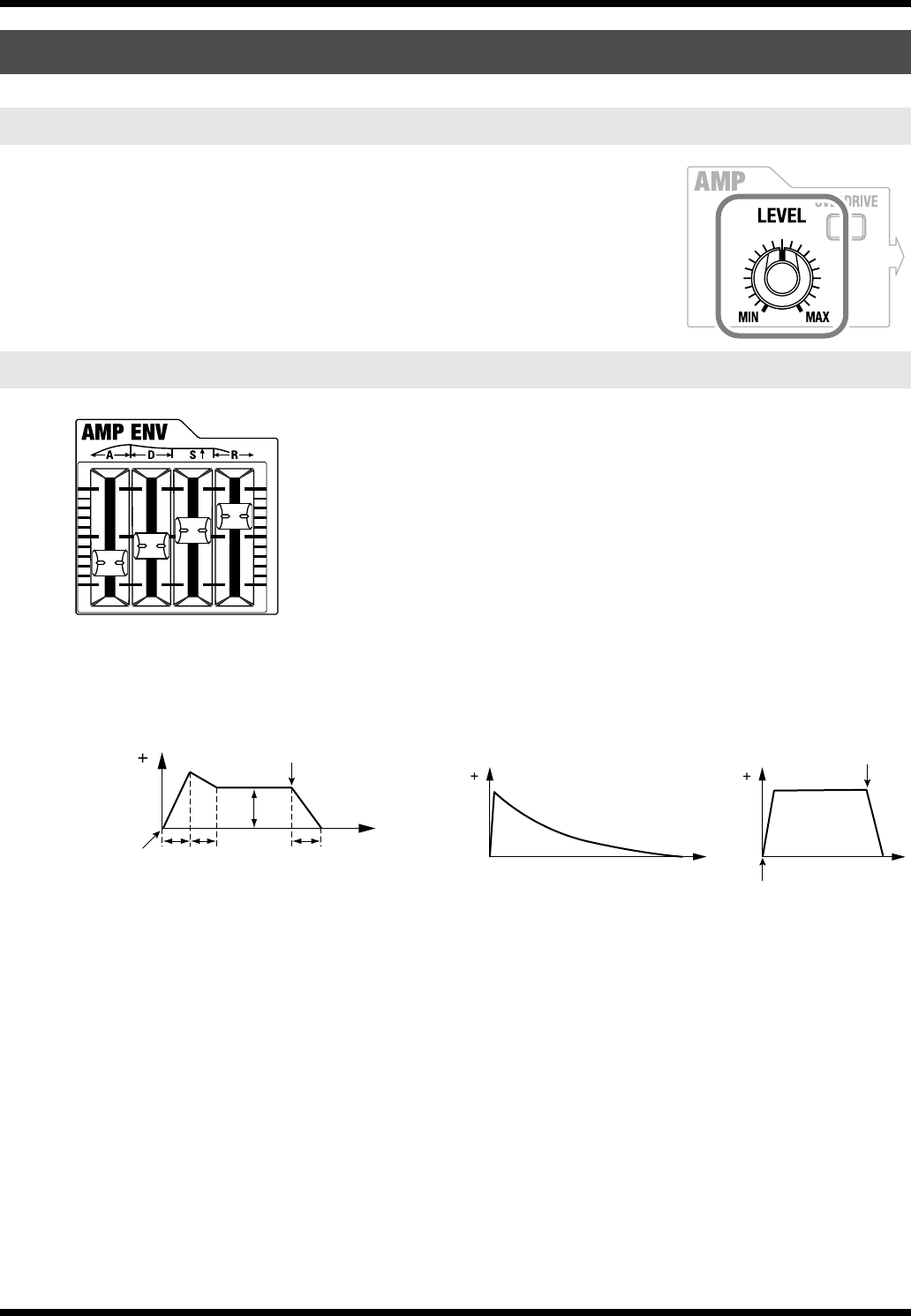
38
Creating sounds
fig.LEVEL-knob
This specifies the volume. Turn the knob toward the right to increase the volume, or
toward the left to decrease the volume.
If you turn the knob all the way to the left, there will be no sound.
OVERDRIVE button
Refer to
Creating a powerful, distorted sound (OVERDRIVE)
(p. 39).
fig.A-Env-sliders
When you play a note on a piano, the sound begins the instant you press the key, and gradually diminishes over
time. In contrast, when you play a note on an organ, the sound stays at a constant volume as long as you hold
down the key.
The amp envelope lets you create these types of time-varying change in volume.
fig.AmpEnv.e
A (attack time) slider
Specifies the time from when you press the key until the maximum volume is reached.
Moving the slider upward lengthens the time, and moving it downward shortens the time.
D (decay time) slider
Specifies the time from when the maximum volume is reached until the volume falls to the sustain level.
Moving the slider upward lengthens the time, and moving it downward shortens the time.
S (sustain level) knob
Specifies the volume that is to be maintained after the attack time and decay time have elapsed until you release
the key.
Moving the slider upward increases the sustain level.
R (release time) knob
Specifies the time from when you release the key until the volume falls to the minimum level.
Moving the slider upward lengthens the time, and moving it downward shortens the time.
Specifying how the sound begins and ends (AMP)
LEVEL knob
AMP ENV (amp envelope) sliders
volume
time
Piano etc.
volume
time
Organ etc.
Key-on
Key-off
volume
AD
S
time
R
Key-off
Key-on
SH-201_r_e.book 38 ページ 2006年4月27日 木曜日 午前11時28分


















